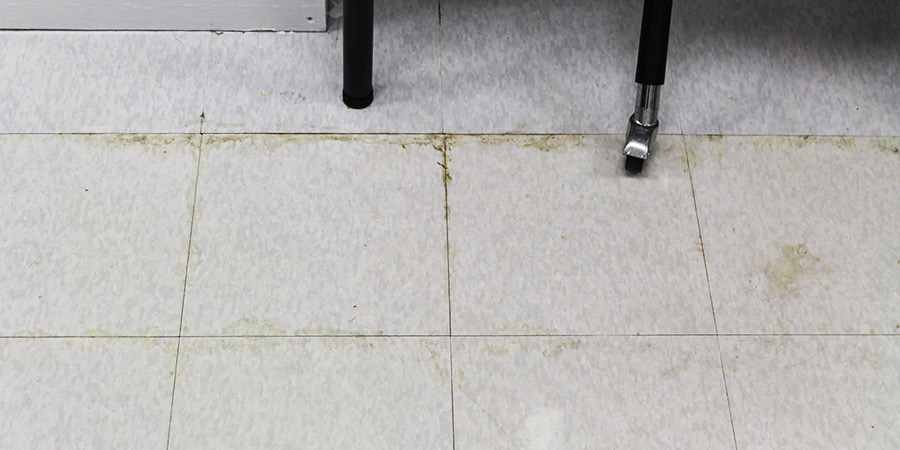
You installed a new floor in your building, yet just months later you’re noticing a bit of bubbling of the vinyl or shrinking of the tiles. It may not seem like a huge deal, but it isn’t very attractive. And worse, it can quickly lead to problems that may disrupt your business. Depending on the cause of the failure, you may be faced with ripping out and replacing the entire floor and potentially adding protective measures underneath it to prevent the problems from reoccurring.
Symptoms of flooring failures
Common signs of flooring failures include:
- Buckling floors
- Floors no longer adhering properly
- Discoloration
- Oozing of material from beneath the flooring
- Cracked or curling tiles
Time is of the essence
Usually floor failures will appear within the first year after the floor is installed. If you suspect your floor is showing early signs of failure, don’t wait to report this to your flooring installer. Your flooring warranty has a limited time (typically 12 months to cover labor and materials), and the earlier you identify the problem, the better off you’ll be, since flooring failures tend to become worse over time.
Causes of flooring failures
Flooring failures can be due to a wide range of issues, some of the most common ones include:
- Excess moisture or alkalinity in the concrete slab underneath the floor
- Contamination in the concrete slab
- Flooring installed in less than ideal circumstances (such as in too cold weather)
- Incompatibility between existing and new floor adhesives
- Improper floor maintenance
Defining a flooring moisture failure
Moisture is a common cause of flooring failures. A concrete slab needs to be dry enough for your flooring adhesive to be applied to it. If there is too much moisture or water vapor in the concrete, over time, the moisture in the concrete slab will rise to the surface and collect at the top of the slab and beneath the flooring. It also must stay below a certain level of relative humidity through the life of the floor for the flooring adhesive to remain effective. This is why you may start to see curling, buckling or other issues with the floor. This type of failure can occur in new construction as well as remodeling projects.
Higher incidences of moisture floor failures
We’re seeing more incidences of moisture-related flooring failures for a number of reasons.
- Changes in adhesives. It’s easy to assume that you don’t need to worry about moisture for a floor that’s being replaced, if the floor didn’t fail in the past. However, today’s flooring adhesives are water-based and are often less capable of handling moisture than older solvent-based adhesives were.
- Fast track construction. The drive to complete projects faster, and therefore install flooring quickly often means there is less time for moisture to escape from the concrete slab.
The importance of remediation
Speedy moisture remediation not only safeguards your facility against unsightly floors, it helps stop hazards that could impact building occupants and visitors. In addition to concerns about trips and falls due to uneven flooring, there is the added worry about moisture leading to mold problems. The EPA recommends the best way to prevent mold is to control moisture, so it’s critical to tackle the moisture issue quickly.
Contact a specialist today to learn about KOVARA floor moisture barriers.
Tags
- Flooring
- KOVARA